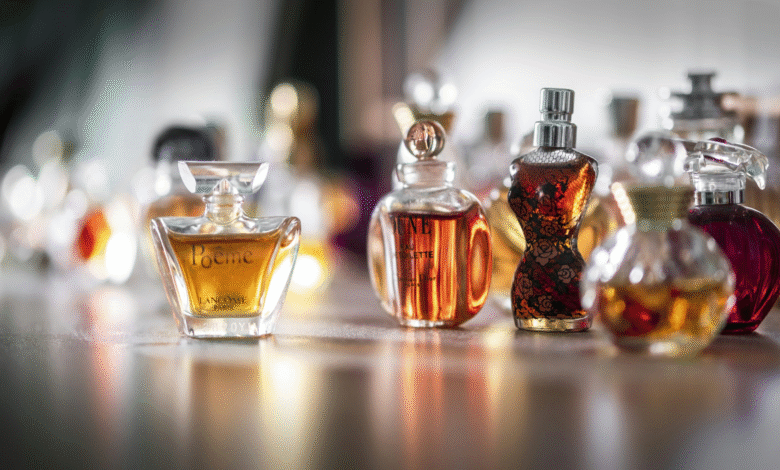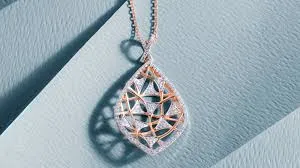The Science of Sophistication: How Material and Scent Shape the Senses

Real luxury is what you feel in your senses, something a lot more than just seeing. It is the feel of it in the hand, the feeling it puts on the skin, the smell that it carries, and the psychology of it calling back a memory. In the new league of luxurious indulgence, material science and sensory psychology have come together to redefine luxurious elegance in the modern world.
Take, for instance, the silky sheen of white porcelain tableware, or the intricate balance within a single perfume fragrance. These two items, which can be found in upscale restaurants or host establishments, are more than just utilitarian, they leave long-term memories by interacting on multiple senses.
This article will describe how the tableware and smell come together to appeal beyond the palate, the nose and into the mind and memory. Starting at the molecular to cultural, we will discover the science of what turns out to be so simply graceful and why our brain has such a response to it.
White Porcelain Tableware: Material Purity, Craftsmanship, and Thermal Properties
There’s a reason why white porcelain tableware is synonymous with fine dining and elevated taste. It is the material of choice of chefs, hosts, and designers because of its clean look and smooth texture. However, there is more to it than its good looks because there is some interesting material science behind its enduring popularity.
The porcelain is achieved through firing kaolin clay at high temperatures- usually more than 1300 o C. The material is vitrified by this process producing a dense, non-porous structure that has good resistance to heat, scratches and stains. Consequently, it maintains warmth in the course of meals without extracting tastes or chemically reacting with food.
The preference of white is not random as well. White areas create a neutral background, which makes the food color more contrasted and therefore more appealing. The glazed texture is easy to clean and gives a hygienic surface that does not allow microbial build up.
Psychologically, the white porcelain is associated with cleanliness, formality, and balance, which are minor but important cues that take a meal to an experience. When gripped, the weight and coolness of the dish conveys a feeling of quality and deliberateness.
Perfume Fragrance: Molecular Design Behind Long-Lasting Scents
Behind all of the luxurious perfumes is a sensitive science. A perfume fragrance is not just a pleasant aroma—it’s a molecular arrangement crafted to evolve over time, evoke emotion, and linger in memory.
Perfumes have three layers of notes, top, middle (heart) and base. Top notes such as citrus or light florals are the notes that evaporate fast and provide the initial blast. After several minutes, heart notes (e.g. rose, jasmine) are perceived, and finally the base notes, which may be composed of musk, amber or vanilla, last the longest and ground the fragrance.
The durability and the range of a smell is a factor of the volatility and the molecular weight of the ingredients. Synthetic molecules such as Iso E Super or natural oils such as sandalwood are chosen because they combine with skin lipids so that the fragrance changes with the body chemistry.
These elements have to be balanced by perfumers, who are also referred to as noses. They use fixatives, solvents and emulsifiers in order to stabilize the scents and also to make sure that they are released during the course of the day. The fragrance molecules are selected not only based on the smell they give, but based on their interaction with the olfactory system and the environment.
Crossing Senses: How Visual Texture and Aroma Influence Perception
When we imagine something elegant, we tend to divide the picture and the smell, however, in the real world, the brain understands beauty as a multi-sensory experience. The interplay between tactile materials like white porcelain tableware and ambient aromas from a perfume fragrance creates a unified sensory experience that influences mood, taste, and perception.
Neurological study has demonstrated that scent can influence the manner in which we perceive visual and textural information. As an example, a dining table decorated with porcelain tableware will be more luxurious when combined with a floral or woody aroma that will match the food. The lightness of the scent adds to the perceived texture of the porcelain- it forms a mental association between the smell and the material texture.
In the same manner, the cleanliness and lightness of the white porcelain trigger cleanliness and openness, which preconditions the brain to perceive the surrounding smells more positively. It can be particularly helpful in upscale restaurants or hospitality establishments, where brand image depends on such minor connotations.
In other cultures, perfume is even employed as a palate primer–sprayed discreetly in and around dining rooms to generate a certain emotional atmosphere. In the meantime, the quiet existence of untouched porcelain conveys order and purity and grounds the setting.
By combining white porcelain tableware and perfume fragrance, designers and hosts can create a symphony of senses—blending aroma, texture, temperature, and color into one sophisticated experience.
Cultural Rituals and the Science of Taste and Smell:
Culture is crucial in the perception of material as well as scent. Across the world, white porcelain tableware has come to symbolize elegance and reverence in meal presentation, from formal Western fine dining to traditional Chinese tea ceremonies. At the same time, perfume fragrance holds rich symbolic meaning in rituals, from Middle Eastern hospitality to European courtship traditions.
Science gives the reason as to why these traditions persist. The sense of smell is directly connected to the limbic system, the system of memory and emotion. A scent can in a second bring back a place, a meal, or a person. That is why signature scents can be connected with certain life events, starting with weddings and ending with sacred ceremonies.
In the same way, the senses of sight and smell are also very important in the perception of taste. A dish that is presented in shiny, symmetrical white porcelain is seen as more sophisticated and tasting better, despite the fact that the ingredients may be the same as those of a more casual dish. This is the cross-modal sensory effect, one sense alters or reinforces the perception of another.
Conclusion:
The level of sophistication is not something that happens by chance, but rather by precision of materials used, alignment of senses and emotional appeal. Whether it’s the smooth finish of white porcelain tableware or the evolving complexity of a perfume fragrance, true luxury lies in the unseen forces that stimulate memory, shape behavior, and evoke feeling.
With the consumers becoming increasingly sensitive to detail, brands and designers need to do more than just surface beauty. The finest experiences are the ones in which visual, tactile, and olfactory stimuli are aligned, and they result in the creation of the soothing and inspiring environments.
Material and scent are ageless instruments in a world that is led by innovation and emotion. They are not mere adjuncts to luxury, but the scientific basis of luxury. By combining craft and chemistry, we get further towards the idea of what makes the ordinary special.




